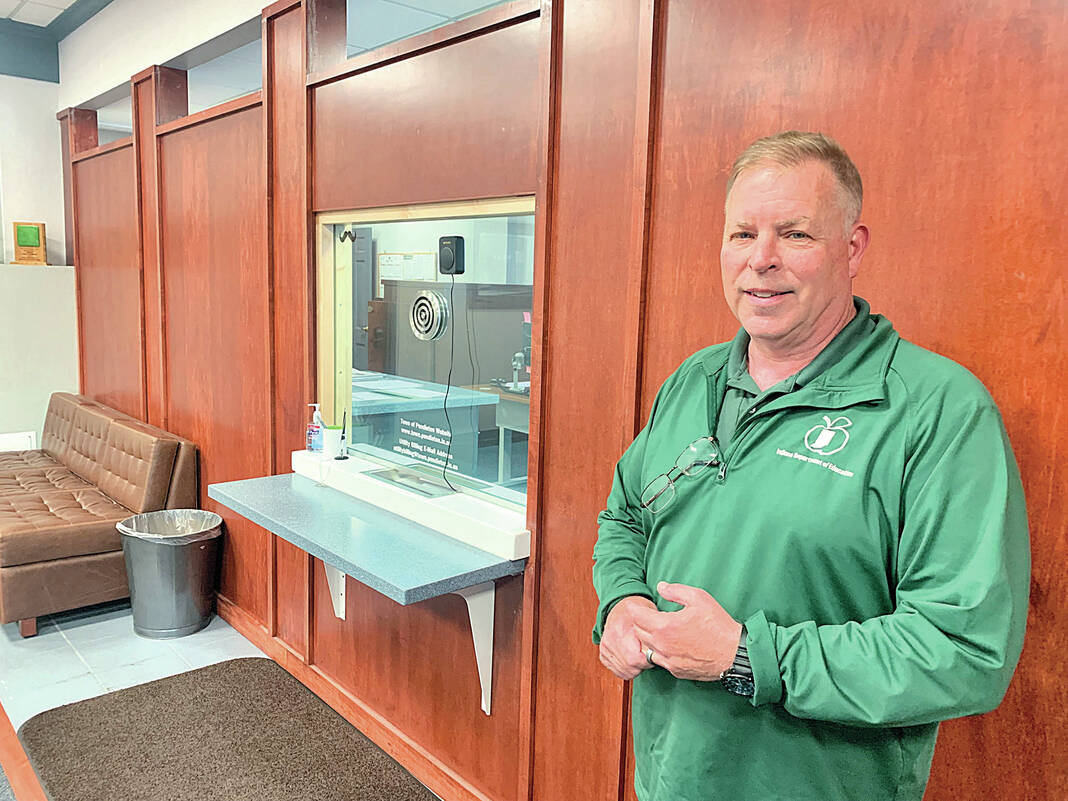
Pendleton town manager Scott Reske stands in the lobby at Pendleton Town Hall, where security features have been installed using American Rescue Plan Act funds.
Scott Slade | The Times-Post
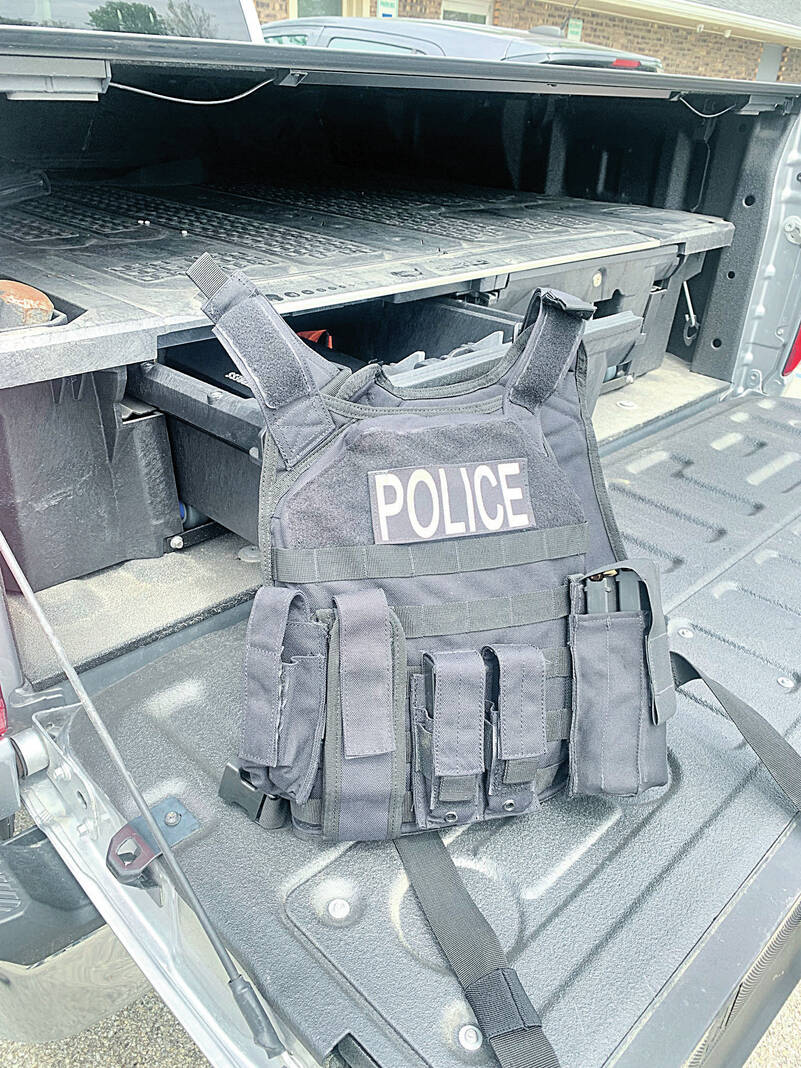
Pendleton Police Department acquired new lighter weight protective vests through federal Covid-relief funds.
Scott Slade | The Times-Post
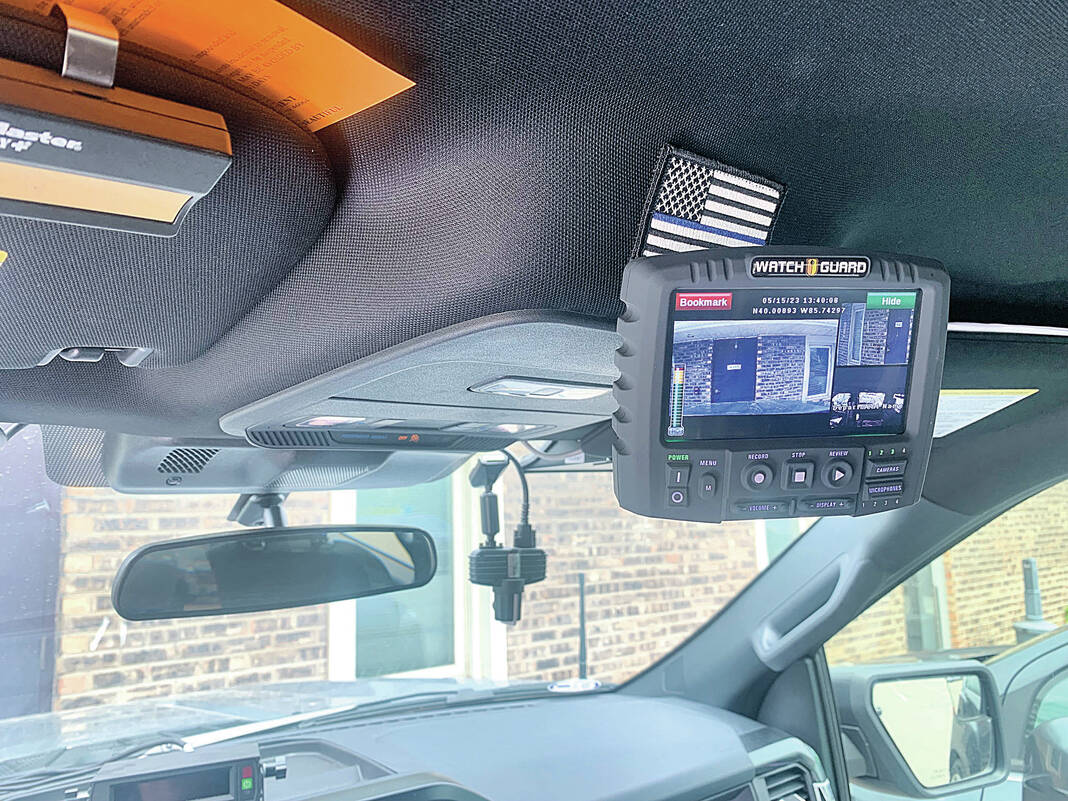
Pendleton Police Department received new body cams and dash cams using funds from the American Rescue Plan Act.
Scott Slade | The Times-Post
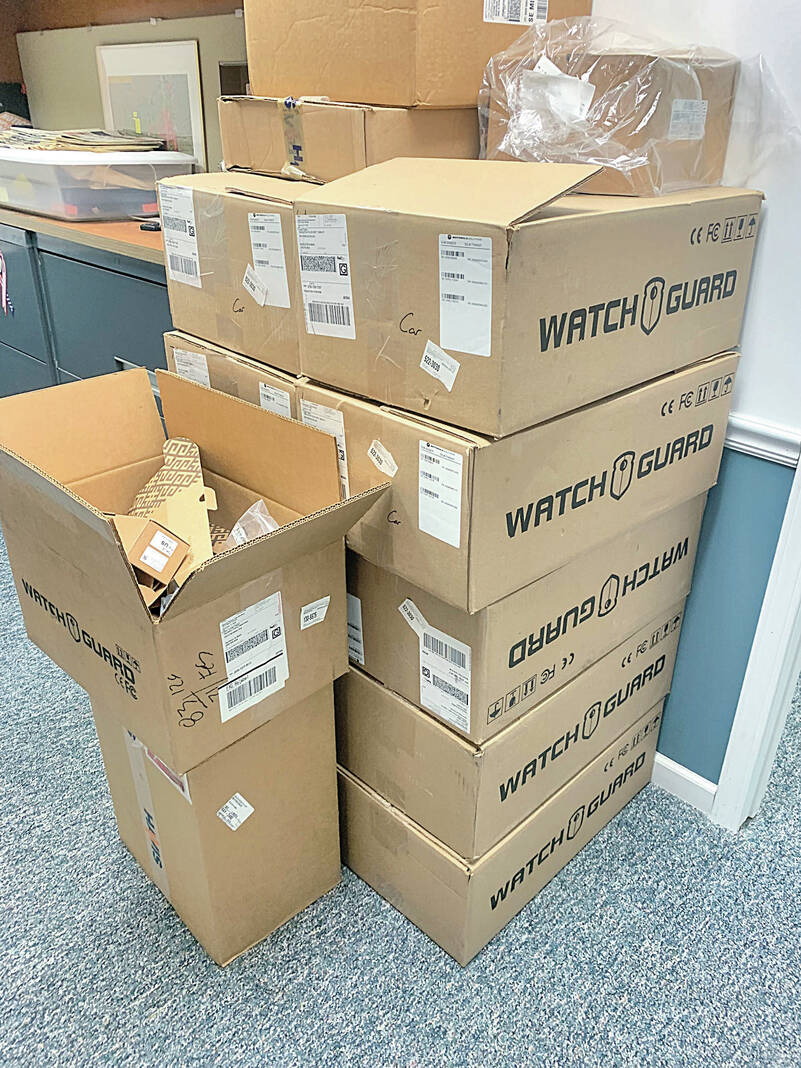
Dash cams at Pendleton Police Department, purchased with American Rescue Plan Act funds, await the arrival of new police cars that are on backorder, according to PPD Chief Marc Farrer.
Scott Slade | The Times-Post
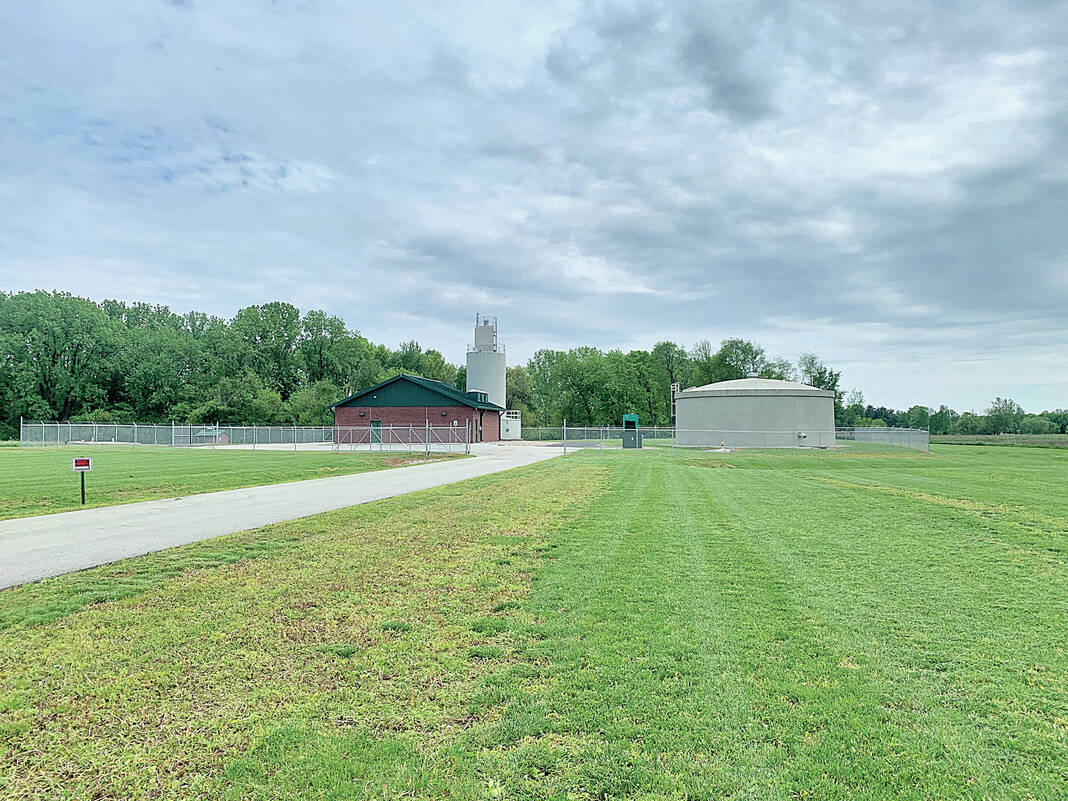
Pendleton’s water treatment plants, including this one on County Road 900 South, received a security upgrade — including cameras and fencing —thanks to American Rescue Plan Act funds.
Scott Slade | The Times-Post
- PENDLETON — Among the purchases made for Pendleton Police Department using American Rescue Plan Act (ARPA) funds are 20 handguns, including holster, gun-mounted flashlight and optics, a type of sight helps officers hit their target.
Without that ARPA (pandemic relief) money, “we would have had to find either grants or other funding options through the town, or buy one gun a year for the next 20 years,” PPD Chief Marc Farrer said.
The handguns are just part of about half a million dollars in equipment, supplies and building upgrades PPD received through ARPA, an amount that isjust about half of the ARPA funds received by the Town of Pendleton.
As the U.S. Department of Health and Human Services officially ended the federal Public Health Emergency for COVID-19 on May 11, ARPA — which was approved in March 2021 — is continuing to provide benefits to local communities, and will do so for years to come, according to local leaders.
ARPA is “federal legislation designed to aid the country’s response to the COVID-19 public health emergency,” according to the Indiana Office of Community and Rural Affairs. “ARPA offers considerable freedom regarding spending abilities, outlining four broad categories of eligible expenditures: To respond to the public health emergency and its economic impacts; To replace lost government revenue, to the extent attributable to the pandemic; To respond to workers performing essential work; and To invest in water, sewer, and broadband infrastructure.
ARPA funds were awarded to local communities in a couple of installments in spring 2021 and 2022.
According to town manager Scott Reske, Pendleton — a town with a 2022 population estimated at almost 5,200, according to U.S. Census data — received $994,200 total in ARPA funds, and so far has spent or approved spending $963,000. The amount paid out is $329,478, with $633,522 still to be disbursed once orders are delivered or work completed.
A town spreadsheet itemizes Pendleton’s ARPA expenditures in 11 projects.
The first two projects involve security cameras and/or security fencing at various town buildings, including town hall, water treatment plants and storage barns. Price tag: $120,000.
Projects 3, 4 and 6 thorugh 9 are for PPD, totaling $460,000, and include body and dash cams; two unmarked Ford F-150 pickup trucks, “tricked out” with various accessories and safety systems; two computers; a Flock camera system that reads license plates and communicates with a national system to help locate wanted fugitives, stolen cars, or missing or endangered people; and equipment, including body armor, uniforms, stop sticks, four service rifles and the handguns.
“We didn’t spend money on anything we didn’t need,” Farrer said. “It was all good stuff.”
Project 11 is a salt barn for $300,000, and Project 12 is two ATVs for $55,000, both purchases that have yet to be made. (A line for Project 10 is voided out.)
Ingalls — with a population estimated at 2,520 in 2022 — is another South Madison community that has used a significant portion of its ARPA money for its police department, including the purchase and outfitting of two police trucks, and the outfitting of four leased police vehicles.
The town received $539,344 in ARPA funds and spent $175,074 on the vehicles.
“We woudn’t have been able to get the police vehicles (without ARPA),” said Neil Stevenson, Ingalls co-town manager and planning director. “It definitely has helped the town purchase equipment for public safety.”
With the new vehicles, “it’s made a huge difference in the amount of money we’ve spent on repairs,” Stevenson said.
The ARPA money for the police cars came out of a category earmarked for general government spending, where $175,074 remains unspent.
Another $200,000 of Ingalls ARPA funds are listed in a category for “Water, Sewer, and Broadband Infrastructure Development.”
The plan is to use it as matching funds for one of two projects.
Ingalls’ first choice is a $600,000 Indiana Office of Community and Rural Affairs (OCRA) grant for stormwater work. The town has applied but hasn’t received a response yet. That grant would require an addition more than $80,000 in town matching funds.
If that’s denied, the town plans to use the $200,000 to apply to the State Revolving Loan Fund program for a water looping project, which involves extending the town’s water line into a loop to better secure the water supply.
“We wanted to be able to leverage that (ARPA) money,” Stevenson said.
Lapel Town Council Vice President Chad Blake said the town — 2022 population estimate 2,383 — was using its $543,452 in ARPA funding “more for capital outlays,” including new bulletproof vests for police and spot road repairs.
“We received a very small amount,” he said, noting that other cities and Madison County received sums in the millions of dollars.
Still, he said, “it’s afforded us the opportunity to do some things we wouldn’t have been able to do.
Blake said the town has spent $241,629 and has a pending distribution of about $150,000 for road repairs, leaving about $151,000 left to spend.
Markleville Town Council President Daniel Roseberry said Markleville — with a 2022 population estimate of 486 — received more than $50,000 in ARPA funds.
“I know that we’re using ours to update our facilities to better serve the public,” he said.
The biggest chunk of it is going to update the town hall itself,” he said, with more than half the money being used to make the restrooms American with Disabilities Act compliant.
That alone will cost about $30,000 he said.
Other work already paid for includes sidewalk work that also addressed ADA concerns.
Once the bathrooms are finished, if there’s any money left, “we may turn towards the park, or pivot to make sure those funds are used wisely,” he said
According to OCRA, ARPA funds must be spent or obligated (under contract or purchase order) by Dec. 31, 2024, with all funds expended by Dec. 31, 2026.